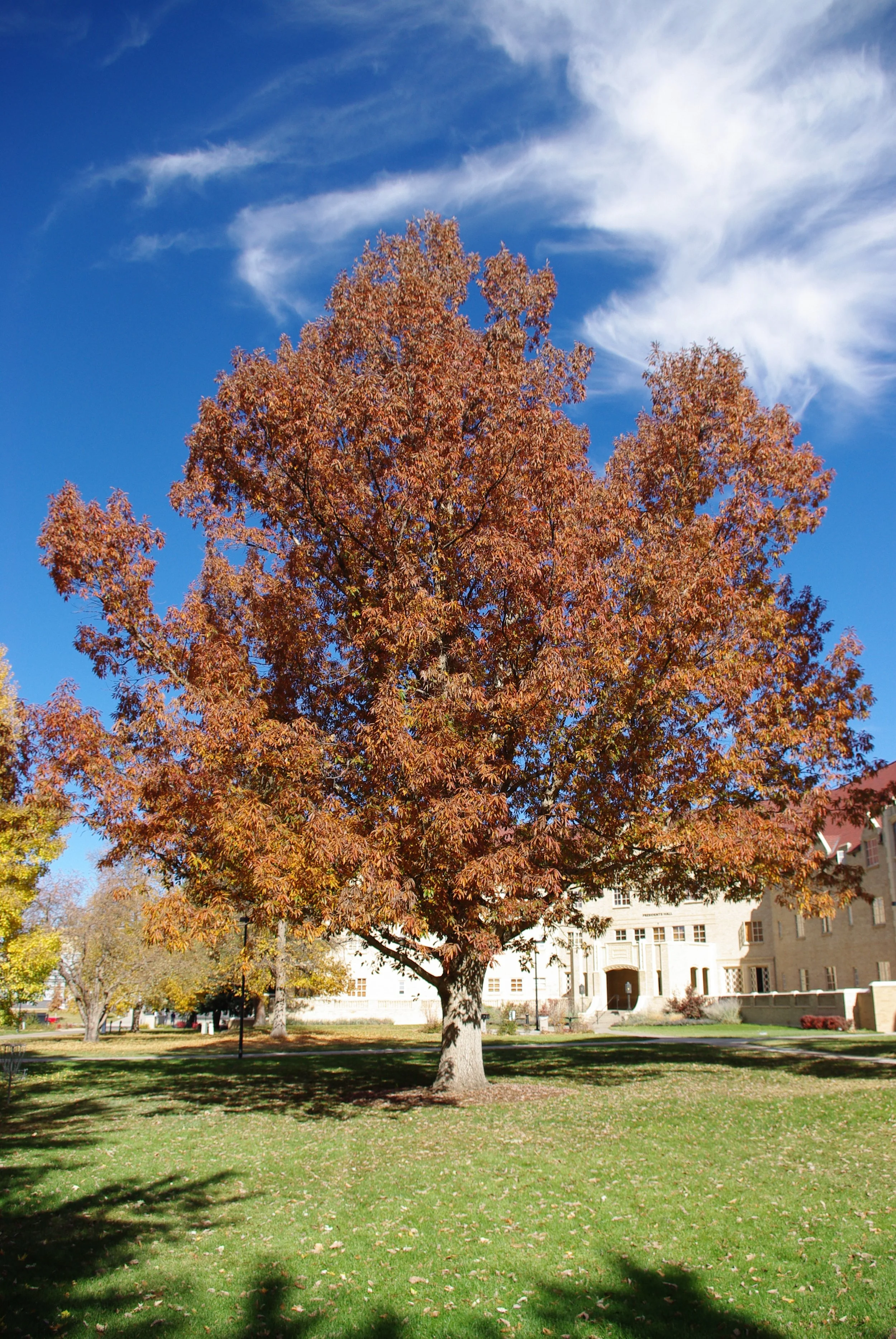chinkapin oak (Quercus muehlenbergii)
First place champion chinkapin oak in Denver at Johnson and Wales University.
Species info:
Leaves: Simple, alternate; deep forest-green and glossy above; white and slightly fuzzy beneath. Margins coarsely toothed with strong, forward-pointing serrations.
Leaflets: None (simple leaf).
Leaf Surface: Lustrous and smooth above; pale and pubescent below.
Bark: Gray and somewhat flaky on the main trunk; becomes rougher with age.
Twigs: Young twigs smooth and light brown.
Flowers: Inconspicuous male and female flowers on the same tree (monoecious).
Fruit: Elliptical acorns up to 1 inch long; cap covers one-third to one-half of the nut. Acorns are sweet and preferred by wildlife.
Botanical: Quercus muehlenbergii
Family: Fagaceae
Mature Height: Up to 60 feet
Canopy Spread: Up to 60 feet
Foliage Type: Deciduous
Tree Shape: Pyramidal when young; becoming broad, rounded, and spreading at maturity
Growth Rate: Moderate
Flower: Inconspicuous
Fruit: Acorns are unusually sweet compared to most oaks, require processing
Fall Color: Typically yellow to yellow-brown (not specified in text but consistent with species; can be omitted if you prefer)
Water Use: Moderate; tolerant of alkaline and clay soils once established
Hardiness: Zones 4–6
Soil Preference: Performs well in alkaline, clay, or rocky soils—one of the few oaks tolerant of Colorado’s high-pH soils; prefers well-drained sites
Sun Exposure: Full sun
Wildlife Value: Acorns are sweet and highly attractive to wildlife including squirrels, birds, and small mammals
Pests/Pathogens: No major pest problems noted in Colorado
Planting Recommendations: Recommended for most sites in Colorado, highly adaptable
Information Sources:
Front Range Tree Recommendation List
Michael Dirr, Manual of Woody Landscape Plants (University of Georgia, 1990)


